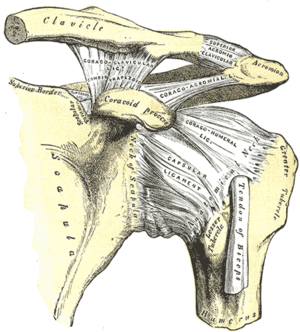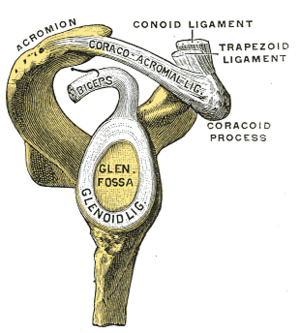Coracoclavicular ligament
The coracoclavicular ligament serves to connect the clavicle with the coracoid process of the scapula.
| Coracoclavicular ligament | |
|---|---|
 | |
 Glenoid fossa of right side. | |
| Details | |
| From | coracoid process |
| To | clavicle |
| Identifiers | |
| Latin | ligamentum coracoclaviculare |
| TA | A03.5.03.004 |
| FMA | 26029 |
| Anatomical terminology | |
It does not properly belong to the acromioclavicular (AC) joint articulation, but is usually described with it, since it forms a most efficient means of retaining the clavicle in contact with the acromion. It consists of two fasciculi, the trapezoid ligament in front, and the conoid ligament behind. There is very little movement at the AC joint .
These ligaments are in relation, in front, with the subclavius and deltoideus; behind, with the trapezius. The coracoclavicular ligament is the strongest stabilizer of the AC joint. This ligament is very important in the transmission of weight of the upper limb to the axial skeleton.
References
This article incorporates text in the public domain from page 315 of the 20th edition of Gray's Anatomy (1918)